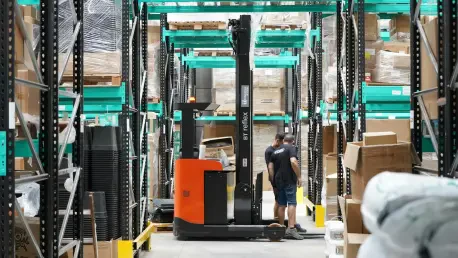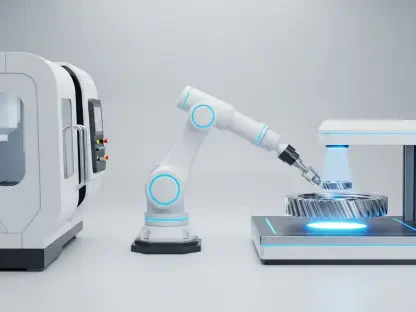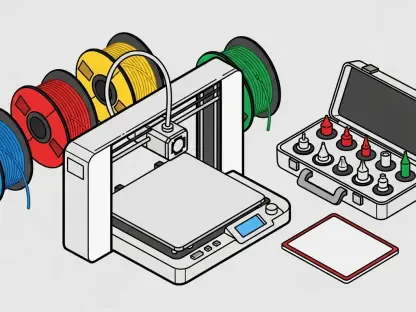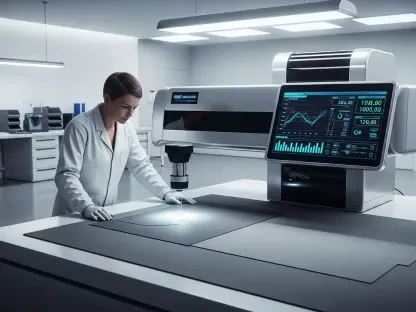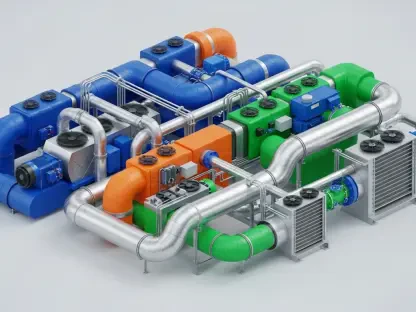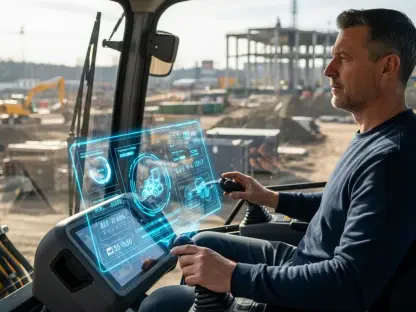Imagine a warehouse bustling with activity, where every second counts, and a single measurement error can delay shipments or inflate costs, disrupting entire supply chains. In today’s fast-paced logistics landscape, inefficiencies in item sizing and data capture are more than mere inconveniences—they are critical bottlenecks that can have far-reaching impacts. The partnership between Honeywell, a titan in industrial solutions, and Stereolabs, a pioneer in 3D vision technology, offers a compelling answer to these challenges. Their innovative mobile solution for automating item measurements promises to transform warehouse operations by boosting accuracy and speed. This review delves into the intricacies of this technology, evaluating its features, performance, and potential to redefine efficiency in manufacturing and logistics.
Core Features and Technological Innovations
Mobile Item Sizing and Weight Measurement
At the heart of the Honeywell-Stereolabs collaboration lies a mobile solution designed to automate the capture of item dimensions and weights with precision. By integrating Stereolabs’ ZED cameras, which provide advanced 3D vision capabilities through real-time depth sensing and motion tracking, with Honeywell’s SwiftDecoder software for robust data processing, this tool offers a seamless way to record critical metrics. Unlike traditional methods that rely on manual tape measures or error-prone fixed systems, this technology ensures measurements are captured instantly and uploaded to a central database, minimizing human error.
The performance of this solution stands out in high-pressure environments where speed is paramount. Warehouses handling diverse inventories benefit from reduced processing times, as the system eliminates the need for repetitive manual tasks. Early feedback from industry deployments suggests a notable decrease in measurement discrepancies, allowing logistics teams to trust the data for planning and execution. This innovation addresses a longstanding pain point in the sector, paving the way for smoother operations.
Moreover, the solution’s mobility adds a layer of flexibility that fixed scan tunnels cannot match. Operators can move freely across a facility, capturing data on items of varying shapes and sizes without being tethered to specific stations. This adaptability not only enhances workflow but also reduces the physical strain on workers, aligning with broader goals of workplace ergonomics and efficiency.
Integration with Warehouse Management Systems
A standout feature of this technology is its compatibility with existing warehouse management systems, ensuring minimal disruption during implementation. The solution effortlessly captures barcode data, optical character recognition information, and high-quality imagery alongside measurements, creating a comprehensive dataset for inventory tracking. Such integration allows warehouses to maintain continuity with established protocols while upgrading their capabilities.
The ease of adoption is further amplified by the system’s user-friendly design, which requires little to no overhaul of current infrastructure. Logistics managers can integrate the tool into their operations without extensive retraining, as the interface aligns with familiar software environments. This seamless connectivity underscores the practical value of the Honeywell-Stereolabs partnership, making automation accessible even to facilities with legacy systems.
Beyond compatibility, the technology supports real-time data sharing, enabling instant updates across platforms. This feature ensures that all stakeholders, from warehouse staff to supply chain coordinators, have access to accurate information at critical decision points. The result is a more cohesive operational framework, where delays caused by outdated or siloed data become a thing of the past.
Performance Analysis and Industry Impact
The performance metrics of the Honeywell-Stereolabs solution reveal a significant leap forward in operational efficiency. In practical deployments, the technology has demonstrated a marked reduction in processing times for item cataloging and truck loading optimization. By automating repetitive tasks, it allows workers to focus on strategic activities like transport coordination, thereby enhancing overall productivity in warehouse settings.
In the broader industrial context, this solution reflects a growing trend toward data-driven logistics. The ability to capture and analyze a wealth of product information—from dimensions to expiration dates—empowers companies to make informed decisions that cut costs and accelerate delivery timelines. This shift is particularly impactful in sectors with tight margins, where even small improvements in efficiency translate to substantial savings.
Additionally, the technology’s influence extends to supply chain scalability. As consumer demand for faster shipping continues to rise, warehouses equipped with such automation tools are better positioned to handle increased volumes without compromising accuracy. This adaptability offers a competitive edge, especially for businesses navigating seasonal spikes or expanding into new markets.
Challenges in Adoption and Scalability
Despite its promise, the adoption of this automation technology faces several hurdles. Technical challenges, such as ensuring consistent performance across diverse warehouse environments, remain a concern for widespread implementation. Variations in lighting, item materials, or facility layouts can occasionally affect the accuracy of 3D vision systems, requiring ongoing calibration and support.
Market barriers also play a role, with cost being a primary obstacle for smaller operations. The initial investment in mobile devices and software integration may deter facilities with limited budgets, even if long-term savings are evident. Additionally, training staff to use the new system, though streamlined, still demands time and resources that some organizations may struggle to allocate.
To address these limitations, Honeywell and Stereolabs are focusing on scalable designs and robust support frameworks. By offering modular solutions that can be tailored to specific needs and providing comprehensive onboarding assistance, they aim to lower the entry barriers. These efforts signal a commitment to making automation inclusive, ensuring that benefits are not confined to large-scale enterprises.
Emerging Trends and Future Outlook
Looking at the trajectory of warehouse automation, the Honeywell-Stereolabs solution aligns with a broader movement toward intelligent manufacturing. The integration of artificial intelligence and advanced analytics into logistics tools is gaining momentum, promising even greater precision in inventory management over the next few years, from now through 2027. Such advancements could further refine how data is leveraged for operational planning.
Another trend shaping the industry is the emphasis on workforce productivity. Automation technologies are increasingly designed to complement human labor rather than replace it, freeing employees from mundane tasks to engage in value-added roles. This balance is crucial for maintaining morale and fostering innovation within warehouse teams, as seen with the current solution’s focus on ease of use.
The potential for broader adoption also hinges on evolving consumer expectations, which demand faster and more cost-effective logistics. As pressure mounts to meet these needs, technologies like the one under review are likely to become standard in forward-thinking facilities. This shift could redefine industry benchmarks, pushing competitors to invest in similar innovations to stay relevant.
Final Thoughts and Next Steps
Reflecting on the evaluation, the mobile solution crafted by Honeywell and Stereolabs proves to be a game-changer in tackling inefficiencies that once plagued warehouse operations. Its blend of 3D vision and seamless software integration delivers measurable improvements in accuracy and speed, setting a high bar for automation tools in logistics. The technology’s real-world impact, from optimized truck loading to streamlined data capture, underscores its value in a sector hungry for transformation.
Moving forward, stakeholders should prioritize pilot programs to test the solution’s fit within specific operational contexts, using feedback to refine implementation strategies. Industry leaders might also consider partnerships with technology providers to customize features for niche challenges, ensuring broader accessibility. Ultimately, investing in scalable training initiatives will be key to overcoming adoption barriers, enabling even smaller warehouses to harness the power of automation and stay competitive in an ever-evolving market.
